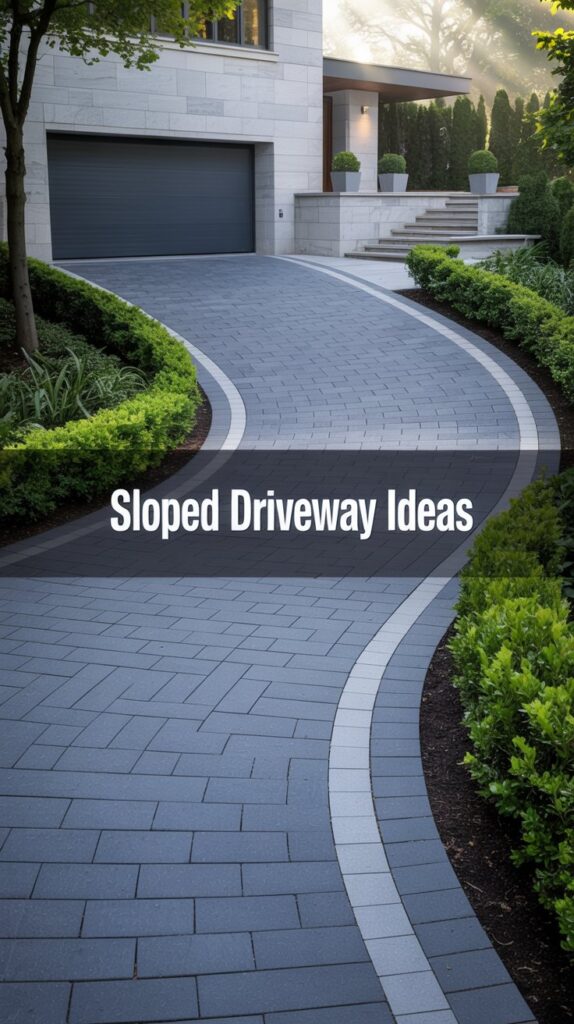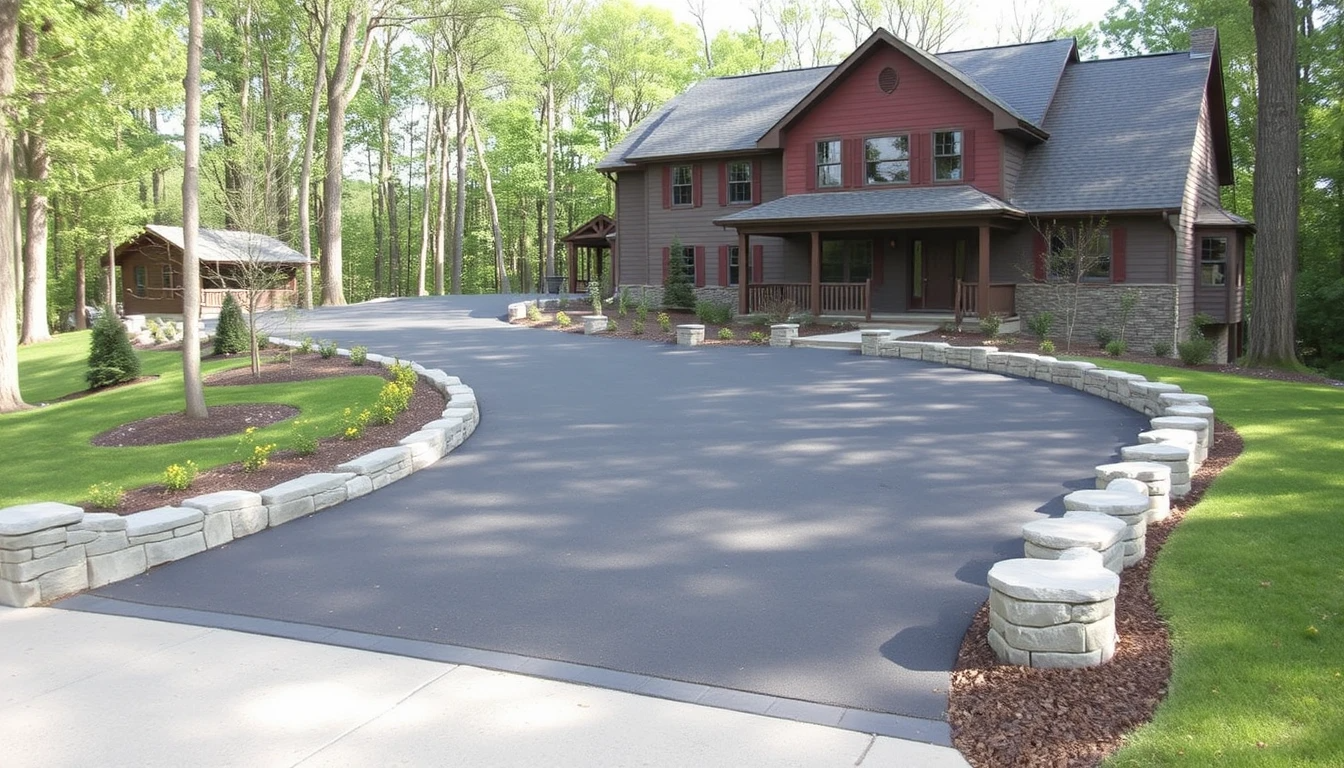Designing a sloped driveway might seem daunting, yet it offers a unique chance to boost both curb appeal and usability. From gentle rises to dramatic inclines, the key lies in smart design choices that blend form with function.
With the right approach, what starts as a challenge can become a striking asset. Dive into these 12 imaginative sloped driveway ideas—each packed with practical guidance, design inspiration, and maintenance tips to transform your inclined drive into a visually captivating, highly functional entryway.
1. Use Retaining Walls for Structure and Style
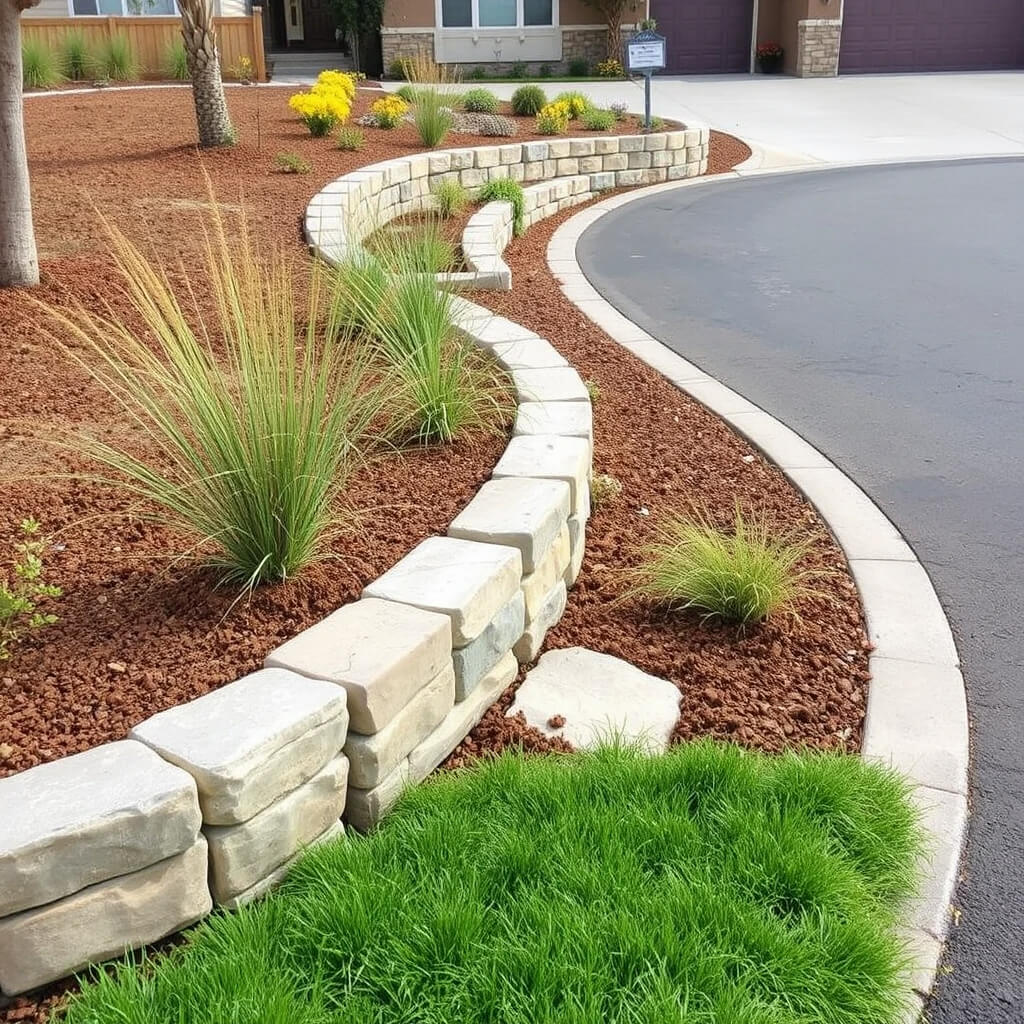
Retaining walls do more than hold back soil—they tame sloped driveways, curb erosion, and carve out crisp, structured edges. Whether built from rugged natural stone, sleek concrete blocks, or warm-toned timber, these walls offer both form and function.
But their role isn’t merely practical. Transform them into vibrant planting beds brimming with drought-tolerant succulents or wispy ornamental grasses.
The lush greenery softens the stark hardscape, infusing life, texture, and visual rhythm into what might otherwise be a purely utilitarian space.
2. Terrace the Driveway Landscape
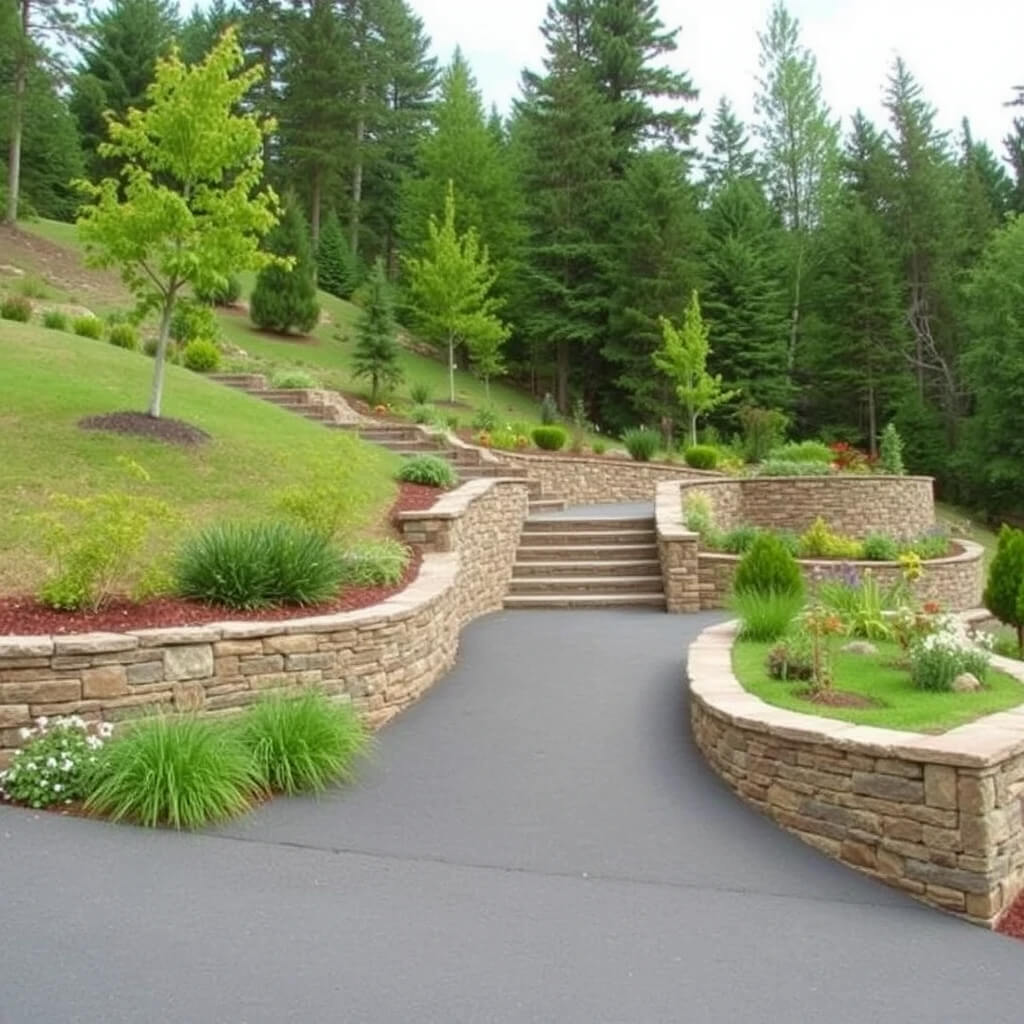
Terracing transforms a steep incline into a series of level, structured steps each one easing the slope’s severity while adding practical charm.
Beyond just reinforcing the driveway’s foundation, these tiered platforms offer visual interest and usable space for lush plantings or cozy seating nooks alongside the drive.
Whether crafted from rugged stone or warm timber sleepers, the retaining walls lend a sculpted, layered aesthetic. It’s a solution where function meets design, turning a challenging grade into a striking landscape feature.
3. Incorporate Textured Pavers or Cobblestones
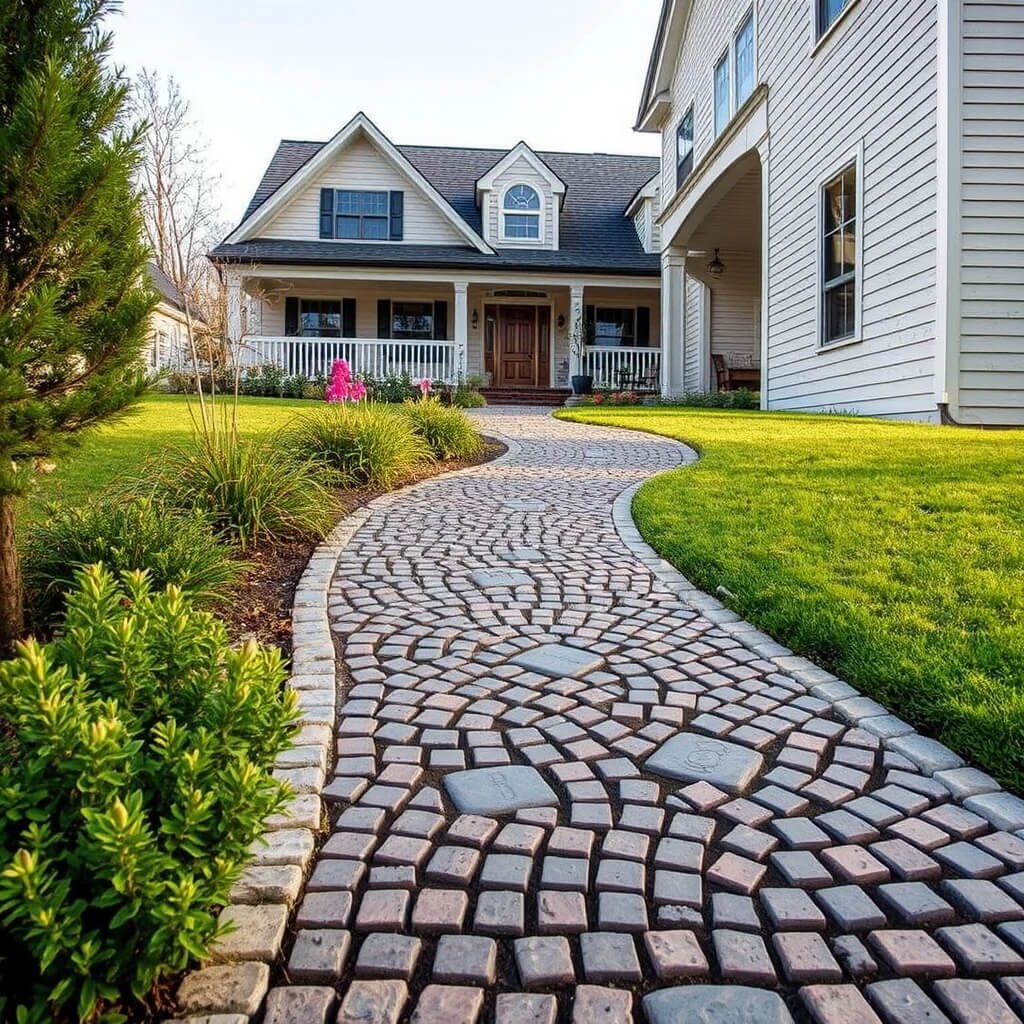
For a blend of lasting durability and visual appeal, textured pavers or classic cobblestones stand out as exceptional options. Not only do they lend a refined, old-world charm that enhances a home’s curb appeal, but their rough surfaces also deliver excellent grip—ideal for sloped paths prone to moisture or ice.
Whether you’re aiming for rustic elegance or traditional sophistication, these materials offer both practicality and aesthetic value, creating pathways that are as functional as they are beautiful and enduring.
4. Gravel with Defined Borders
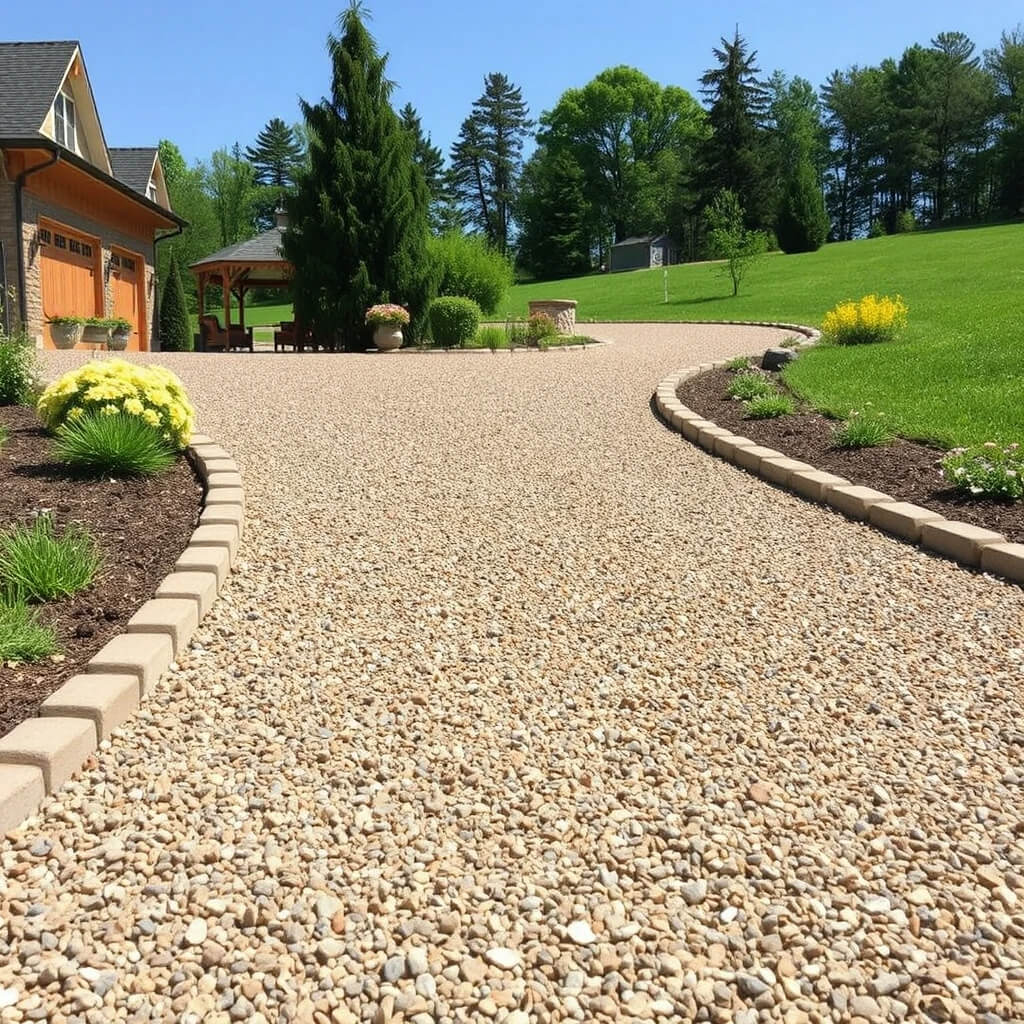
Gravel offers an affordable yet practical driveway option, especially on sloped terrain where proper drainage is essential. Its loose composition allows water to pass through easily, reducing erosion risks. However, to stop it from spilling over or washing away, sturdy edging whether metal, timber, or stone is key.
Beyond function, gravel lends a charming, rustic aesthetic that blends beautifully with natural surroundings. Installation is straightforward, and upkeep requires minimal effort, making it a smart, visually pleasing choice for both rural and suburban settings.
5. Use Stamped Concrete for Pattern and Grip
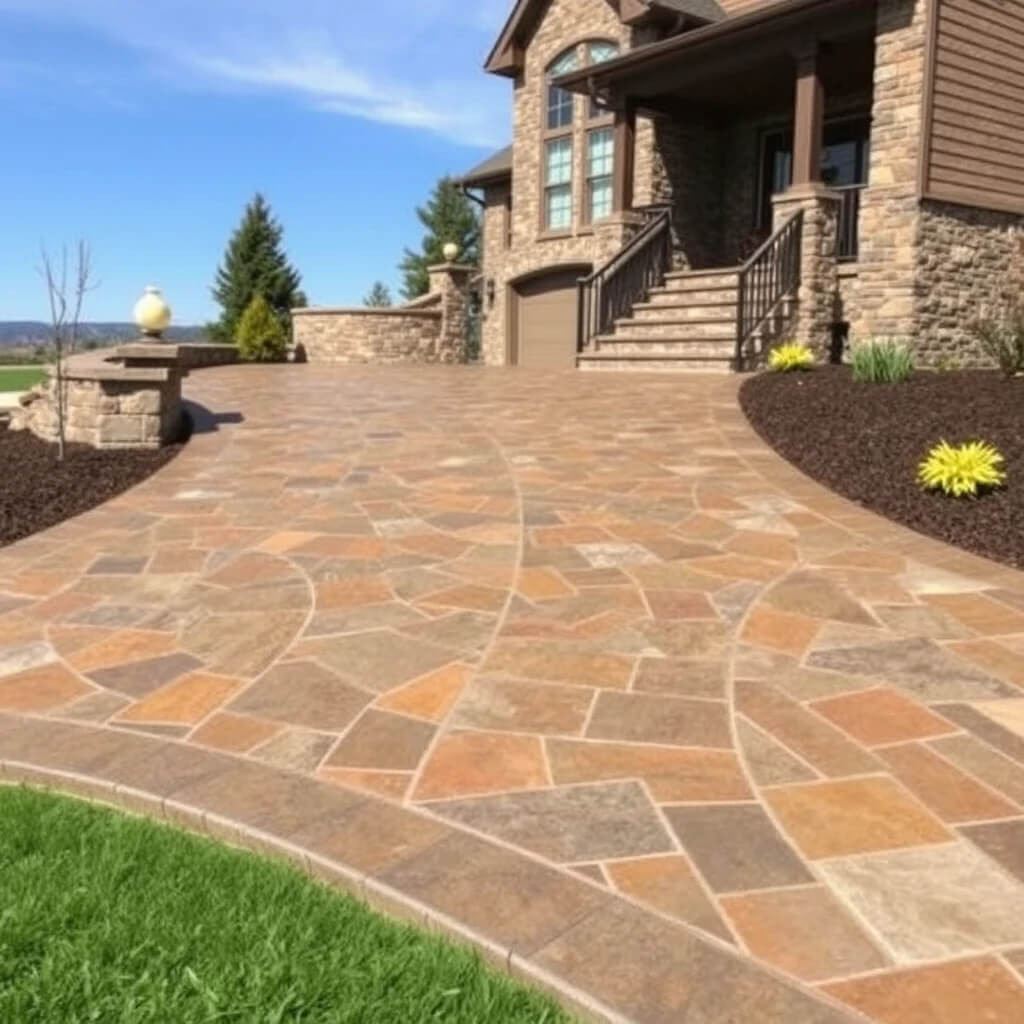
Stamped concrete offers a masterful blend of form and function, artfully replicating the texture and charm of stone, brick, or even weathered wood.
Beyond its visual appeal, this surface delivers reliable slip resistance an essential advantage on sloped driveways. The true beauty lies in its adaptability: endless combinations of colors and intricate patterns allow for striking customization.
Whether you’re aiming for understated elegance or bold curb appeal, stamped concrete transforms an ordinary driveway into a sophisticated, durable, and practical design statement.
6. Create a Bocce Ball Court or Multi-Use Space
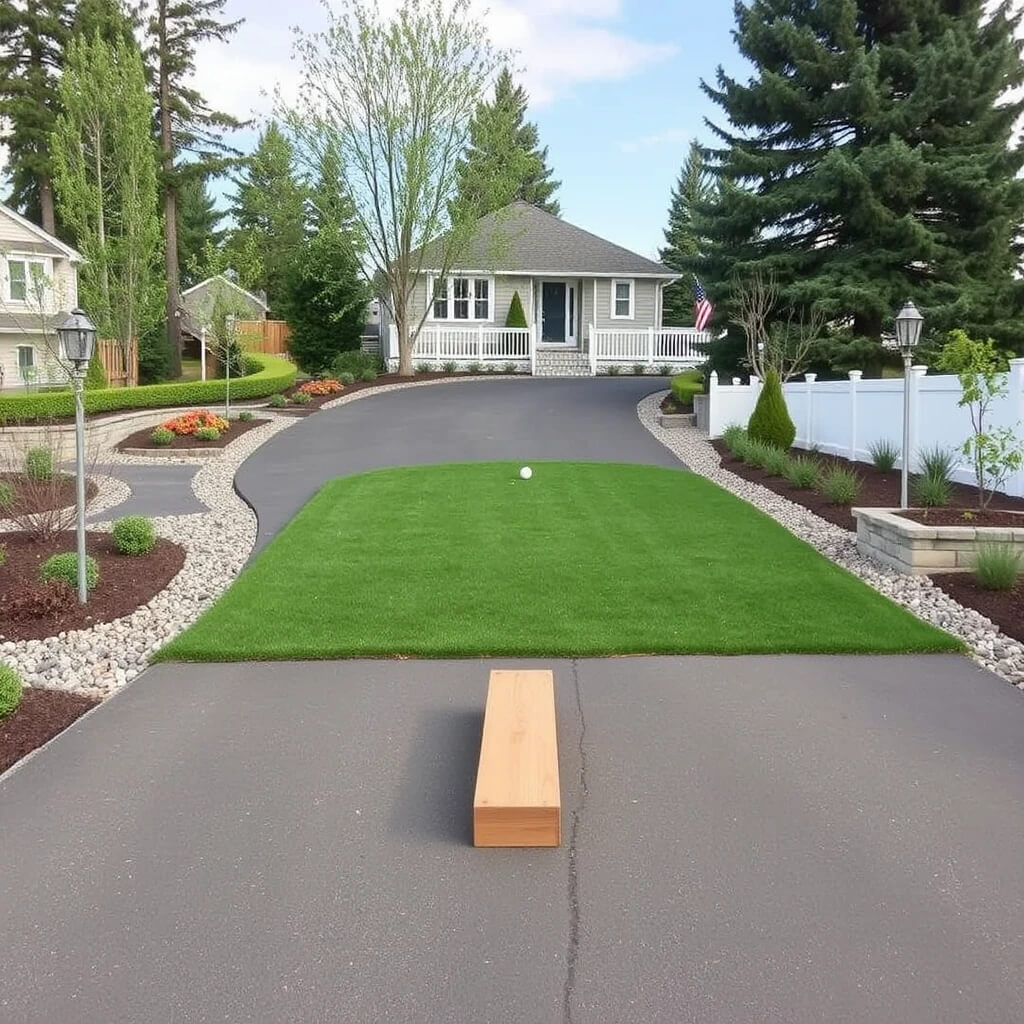
Picture this: a once-overlooked stretch of your sloped driveway reimagined as a rustic bocce ball court or a casual hangout framed with crushed gravel or decomposed granite. What was once merely a functional incline now hums with laughter, conversation, and the satisfying clack of rolling balls.
This transformation doesn’t just add charm it injects purpose and play into a space often forgotten. It’s a simple twist of creativity that morphs everyday ground into an unexpectedly vibrant social nook.
7. Add a Bluestone or Belgian Block Apron
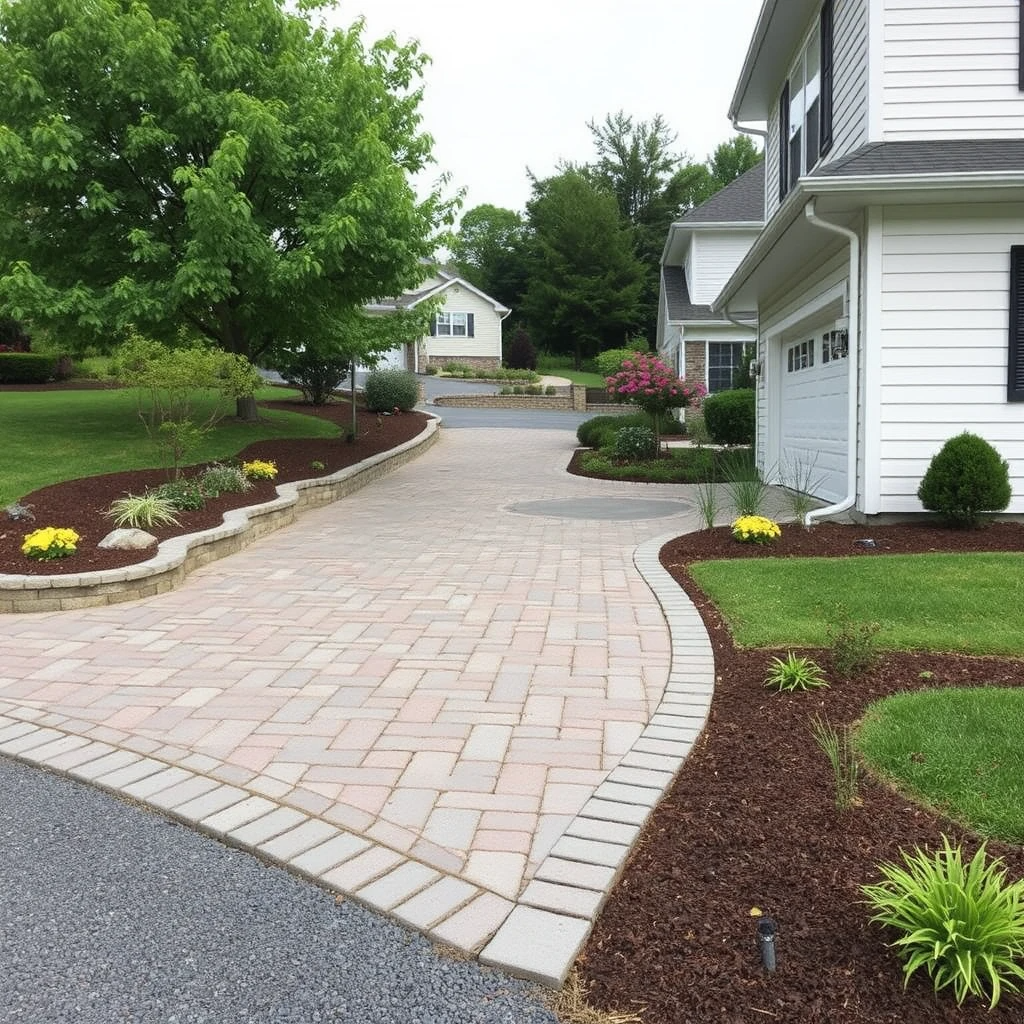
Where your driveway meets the street lies an often-overlooked detail the apron. Yet, transforming this threshold with timeless materials like bluestone or Belgian blocks can dramatically elevate curb appeal.
Beyond aesthetics, these durable choices serve a greater purpose: they help manage stormwater runoff and reduce erosion, particularly on inclined surfaces.
The contrast of refined stone against asphalt creates a polished first impression while quietly reinforcing the structure’s resilience. It’s a subtle upgrade that speaks volumes in both form and function.
8. Plant Ornamental Grasses and Drought-Resistant Plants Alongside
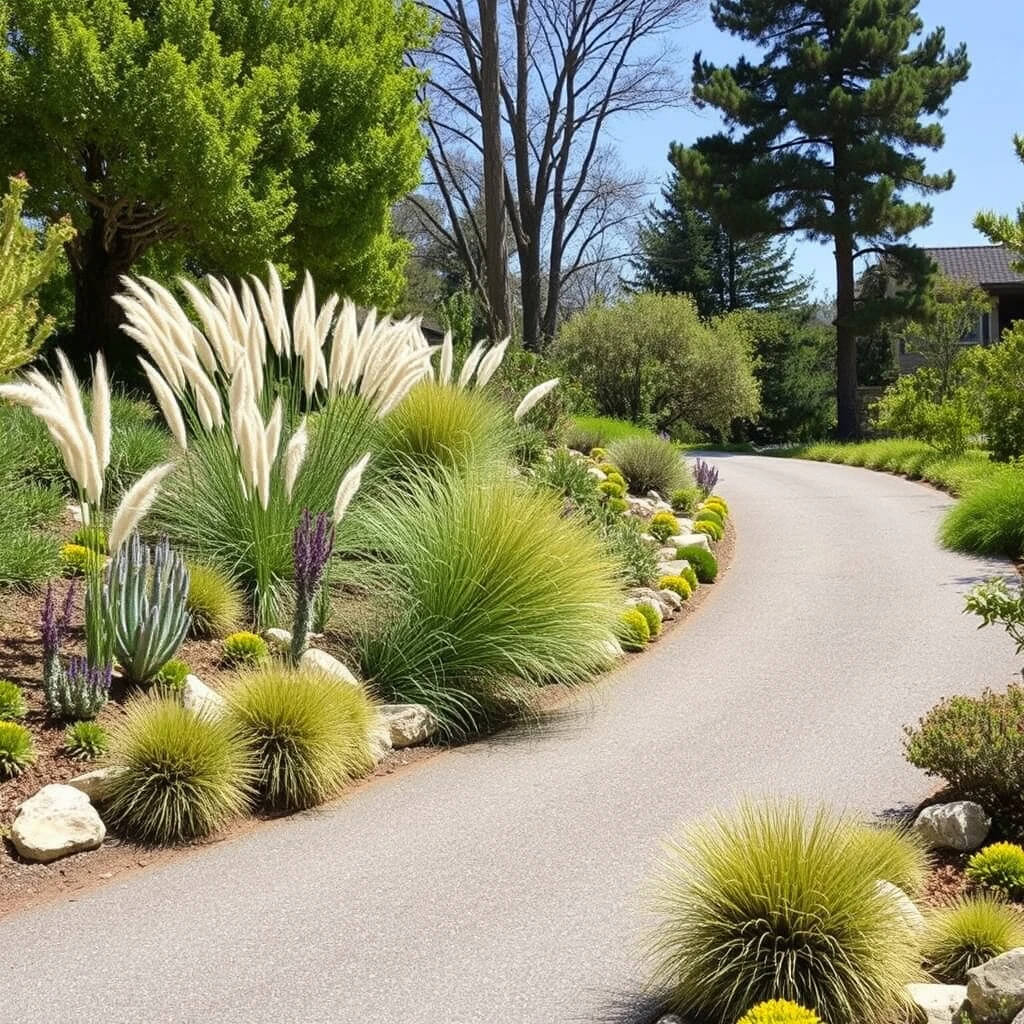
Planting on a sloped driveway demands both strategy and resilience this isn’t just about beauty; it’s about survival. Opt for hardy, drought-tolerant plants that thrive in fast-draining soil.
Ornamental grasses are a standout choice not only do they dance with the breeze, but their deep roots help anchor the earth.
For texture and contrast, weave in sculptural succulents or other rugged, sun-loving varieties. The result? A striking, low-maintenance landscape that feels effortlessly wild yet purposefully grounded.
9. Set Defined Pathways and Steps
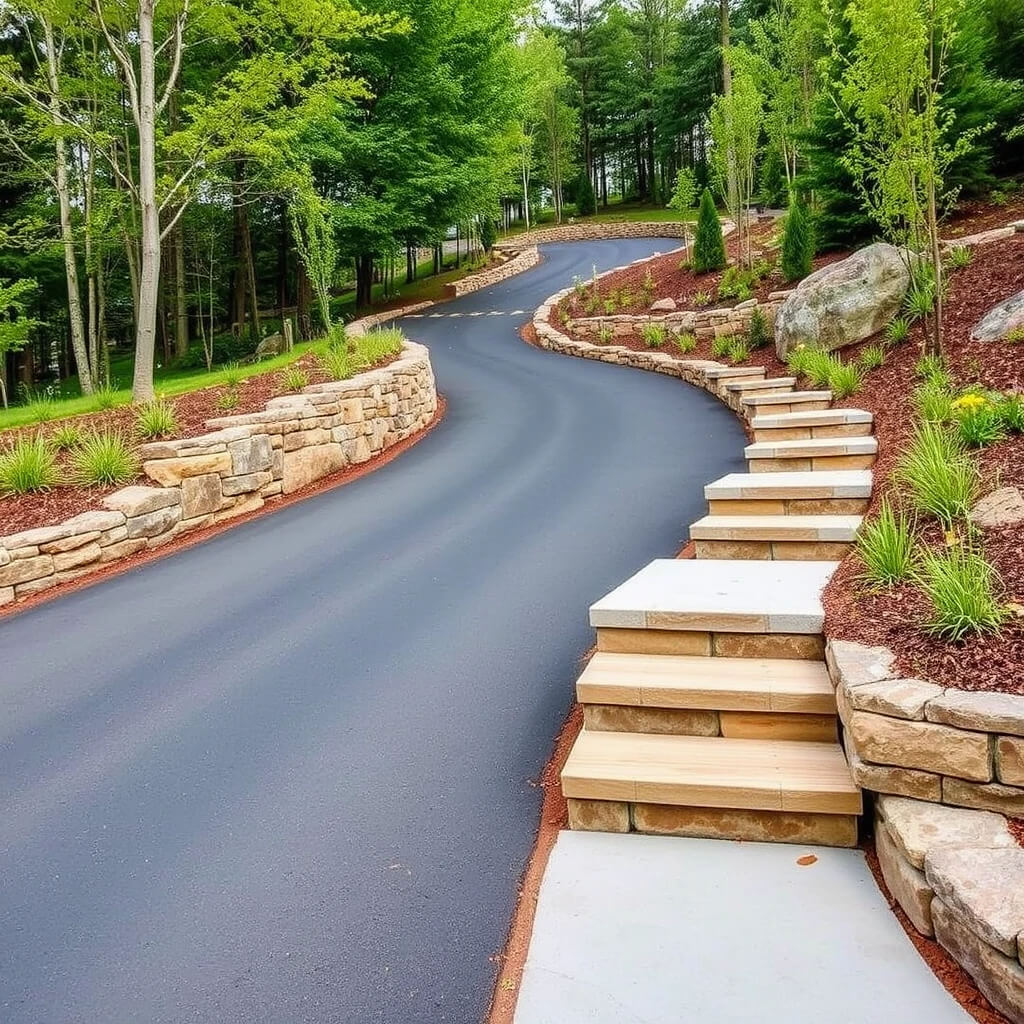
On steeper inclines, ensuring both safety and ease of movement becomes essential. Integrating pathways or steps either flanking the driveway or seamlessly built into its design offers a thoughtful solution.
Consider using materials like rustic stone, warm-toned wood, or poured concrete to craft steps along terrace edges. Not only do they guide foot traffic efficiently, but they also introduce layers of texture and visual rhythm to the landscape, blending practicality with an inviting, architectural charm that feels both grounded and intentional.
10. Install Proper Drainage Systems

Sloped driveways demand thoughtful drainage solutions to prevent unsightly erosion and troublesome water pooling. Instead of relying solely on basic grading, explore layered approaches like French drains hidden beneath the surface, gravel borders that absorb excess runoff, or permeable pavers that let water seep through naturally.
You might also integrate subtle swales gentle ditches that guide water away without disrupting the landscape. By blending function with design, these solutions protect your driveway while preserving the aesthetic harmony of your outdoor space.
11. Lighting and Safety Features

Navigating outdoor slopes demands heightened caution especially after dark or during the slick grip of winter. To ensure safe footing, install low-voltage LED lights along stairs, borders, and retaining walls, casting a gentle glow that guides each step.
Beyond lighting, textured surfaces or anti-slip coatings offer essential traction, reducing the risk of slipping in rain or ice. These subtle enhancements not only prioritize safety but also elevate the visual appeal of your landscape, blending practicality with understated sophistication.
Understanding Sloped Driveway Challenges and Solutions
Sloped driveways can pose challenges like water drainage, soil erosion, and vehicle traction. Design strategies must tackle these while ensuring your driveway complements your home’s style.
- Drainage: Use hardscapes and landscaping for stormwater control.
- Erosion Control: Retaining walls, terraces, and plants keep soil stable.
- Traction and Safety: Selecting correct surface materials and adding lighting addresses slipping hazards.
Incorporating these solutions can transform your sloped driveway from a maintenance headache into a beautiful and practical feature.
Frequently Asked Questions
Q1: What is the best material for a sloped driveway?
Materials like textured concrete, cobblestone, and brick pavers offer excellent traction, durability, and aesthetic appeal for slopes. Gravel is also good for drainage but requires containment.
Q2: How steep can a driveway be before it becomes problematic?
Driveways with slopes exceeding 15% start to present challenges in traction and drainage and may require special design features like terracing or anti-slip surfaces.
Q3: How do I prevent erosion on my sloped driveway?
Use retaining walls, terracing, drought-tolerant plants, and proper drainage systems like French drains to prevent soil erosion and water damage.
Q4: Can I incorporate recreational spaces into my driveway?
Yes, creative ideas like adding a bocce ball court area or patios adjacent to the driveway create multi-use spaces that add value and enjoyment.
Conclusion
Designing a sloped driveway offers a unique chance to blend function with aesthetic innovation. By using smart materials, incorporating landscaping, and addressing drainage and safety issues, your sloped driveway can become a striking feature that enhances curb appeal and home value.
Whether you prefer sleek stamped concrete, rustic gravel, or elegant cobblestones, the right design can turn your sloping driveway into a seamless extension of your home’s outdoor beauty.
